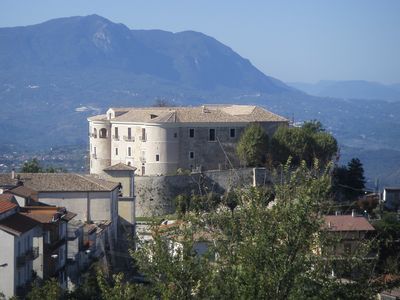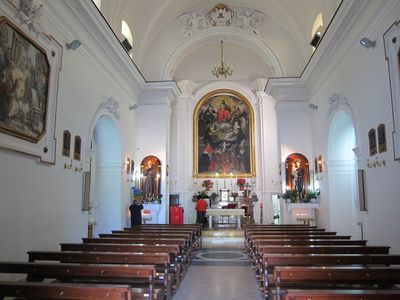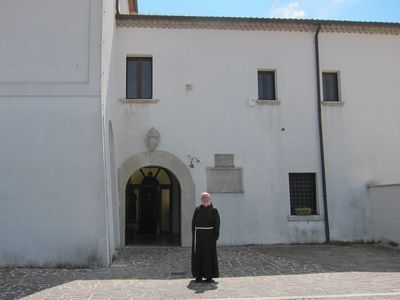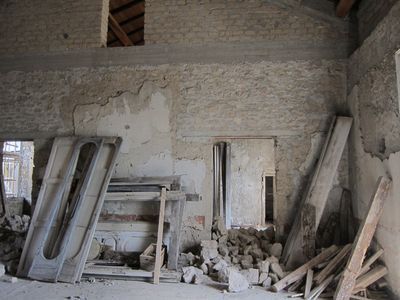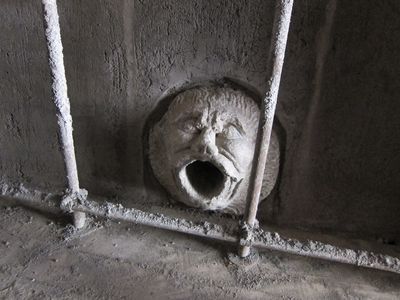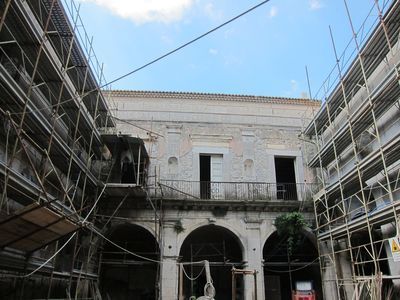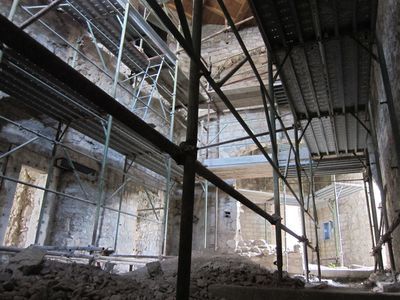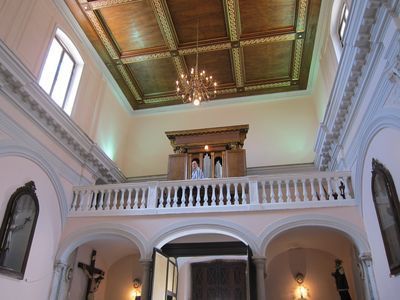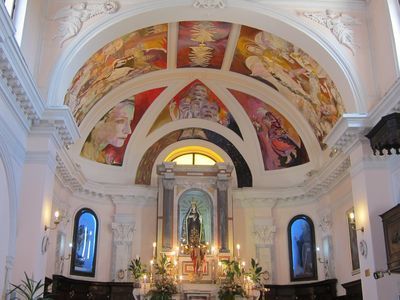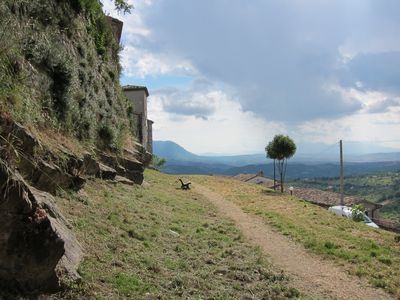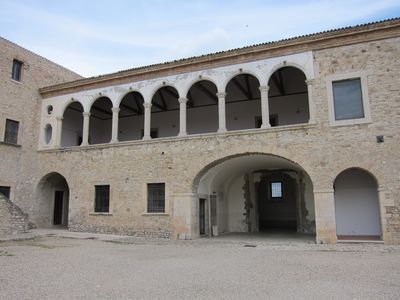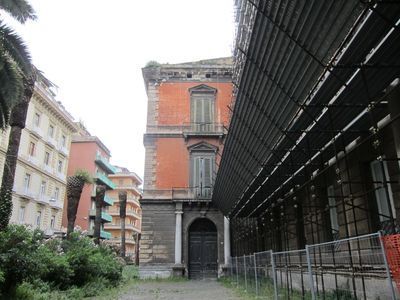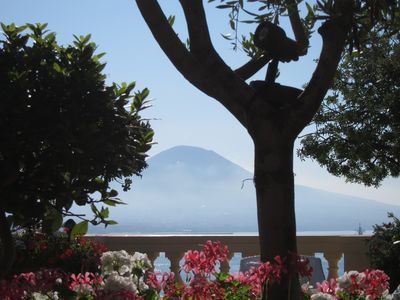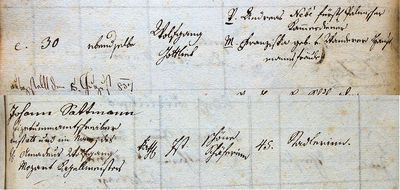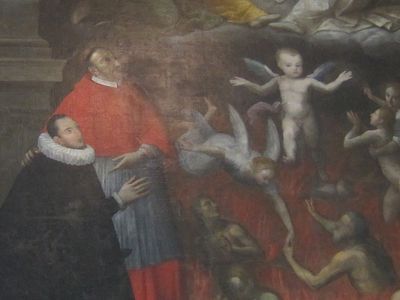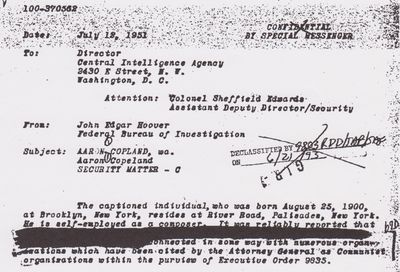Alex Ross's Blog, page 207
December 20, 2011
'Tis the season....
Sainting Hildegard
Pope Benedict XVI — amid recent pronouncements about the need for "adequate mechanisms for the redistribution of wealth" — has indicated that the twelfth-century composer, theologian, and poet Hildegard von Bingen would be made a Doctor of the Church, with an official canonization to follow. Interestingly, it's an open question whether Hildegard achieved sainthood in an earlier era. A commission gathered evidence of her miracles in 1233, but four years later Pope Gregory IX found fault with the format of the presentation and asked for more detail. The commission revised its work, adding reports of new miracles attributable to Hildegard's influence. Evidently, the amended submission either disappeared in transit or was never sent, for in 1243 Pope Innocent IV inquired again about the status of the case. At that point, the process stalled. In the fourteenth century, there was another attempt to declare Hildegard a saint, followed by another mysterious delay. Reports Johannes Trithemius: "Having carefully read over the testimonies submitted to him, [Pope John XXII] made no difficulty about canonizing the virgin, as I am assured by the apostolic writing, although this event, longed for by many, was not brought to pass." As Anna Silvas writes, in her book Jutta and Hildegard, Hildegard began to be widely recognized as a saint, whether or not John XXII or a later pope was able to complete the official process. Her feast day was celebrated in Rupertsberg, the site of Hildegard's convent, and her name appeared in the sixteenth-century Roman Martyrology.
It would seem that Benedict XVI has decided to clear up the confusion once and for all, in recognition of Hildegard's singular historical status. In an audience last year, he praised "this great woman, this 'prophetess' who also speaks with great timeliness to us today, with her courageous ability to discern the signs of the times, her love for creation, her medicine, her poetry, her music, which today has been reconstructed, her love for Christ and for his Church which was suffering in that period too, wounded also in that time by the sins of both priests and lay people, and far better loved as the Body of Christ." One week later, he spoke of Hildegard again, stressing her willingness to "combat the abuses of the clergy." He also quoted a remarkable letter that Hildegard wrote to Emperor Frederick Barbarossa, assuming the voice of God to reprimand him for his schismatic resistance to Pope Alexander III: "You will be sorry for this wicked conduct of the godless who despise me! Listen, O King, if you wish to live! Otherwise my sword will pierce you!"
December 18, 2011
More Gesualdo pictures
On the theory that there is no such thing as too much Gesualdo, I am offering some more pictures from my expedition last June into the violent and visionary world of the Prince of Venosa. (See this post at the New Yorker website for the original set.) Giancarlo Vesce took the above picture of the Gesualdo castle in October. The renovation is apparently making rapid progress.
How the painting "Il perdono" looks from the back of Santa Maria delle Grazie, in Gesualdo.
Padre Antonio Gambale, of the Capuchin monastery attached to the church. Carlo Gesualdo founded the institution.
More features of the interior of the castle. The last picture, if I'm not mistaken, shows the Prince's private chapel.
At another church in Gesualdo, the Chiesa dell'Addolorata, Domenico Sodano performed the first of Gesualdo's pieces for the anthology Salmi delle compiete. Soldano gave me a copy of his excellent recording Alla corte di Gesualdo, containing vocal and instrumental pieces by Gesualdo and various other composers of his era, including his associate Pomponio Nenna and the mid-sixteenth-century Neapolitan musician and poet Massimo Troiano. The latter was included, I suspect, because he was accused of murdering a fellow musician in Munich, in 1570, and fled the city, never to be heard from again.
Above the altar is a series of paintings by the contemporary artist Kathy Toma, interweaving Biblical elements with motifs reminiscent of the Gesualdo story. Those who understand Italian can read a full explication of the project here.
Outside the castle.
Part of the Castello in Venosa, some eighty miles east of Gesualdo. Although Gesualdo held the title of Prince of Venosa and derived most of his wealth from the principality, he seems to have spent relatively little time there.
The Palazzo d'Avalos in Naples.
"He was at Naples writing letters home...."
December 17, 2011
CD of the week: Vivaldi bassoon concertos
The first movement of Vivaldi's Bassoon Concerto in F, RV 490, from Concerti per fagotto, vol. 2; Sergio Azzolini, bassoon, with L'Aura Soave Cremona (Naïve).
Miscellany: Occupy Amazon, etc.
Image from Diesel bookstores in California.
Make Music Winter, the winter-solstice counterpart to Make Music NY, will make its debut on Wednesday. I'm particularly excited about The Knights' musical occupation of the F line to Coney Island.... A heavy-duty new-music weekend is under way in New York. Tonight, ne(x)tworks and the JACK Quartet give the second of two performances of Spellbeamed, a new piece by composer-harpist Zeena Parkins; the Talea Ensemble surveys microtonal scores; and the New York Philharmonic delivers the second of a pair of CONTACT! events, with an Alexandre Lunsqui premiere and, less novel, a rendition of HK Gruber's Frankenstein!!, which the St. Louis Symphony played at Carnegie as recently as 2009. (Could we have more actual new music on CONTACT!?) Tomorrow there's a Xenakis concert at Greenwich House.... The nonprofit radio collective free103point9 announces an open call for works celebrating John Cage's radio compositions.... Worth a listen: a CBC Inside the Music program devoted to Louis Armstrong's private tapes, on which Terry Teachout drew for his Armstrong biography, Pops. If you're pressed for time, at least stick around for the moment when Lucille Amstrong tells her husband to turn off the machine, saying, "Posterity my ass.".... Housing Works is introducing a cool new series called Safe Space, pairing musicians with writers. The first event, involving Jonathan Biss and Adam Haslett, is on Jan. 9.... If you're buying books this season, I encourage you, more than ever, to shop at independent bookstores. Although you may pay more, you will be supporting book culture. Richard Russo's scathing op-ed about Amazon.com might be an incentive.
December 15, 2011
Vivaldi in Antarctica
Photo: El Sodre en la Antártida.
Sometime yesterday, a chamber ensemble from the Orquesta Sinfónica del Sodre, the Uruguayan orchestra, landed at a Chilean base in Antarctica. From there, the musicians set off by land toward the Artigas Base, a Uruguayan scientific outpost, where they are scheduled to give a concert today. I'm not sure how many classical ensembles have performed in Antarctica before, but the organizers describe their expedition as "unprecedented." The program includes the final movement of Schubert's "Trout" Quintet, Vivaldi's "Concerto alla rustica," the Boccherini Menuet, the Fuga y Misterio from Piazzolla's María de Buenos Aires, and various works of César Cortinas, Eduardo Fabini, Gerardo Moreira, Violeta Parra, Carlos Gardel, and the Chicago-based composer Elbio Barilari — whose news alert about the event was forwarded to me by Andrew Patner. Residents of Chilean, Chinese, South Korean, and Russian bases were also planning to attend. Those who read Spanish can follow a dedicated blog. The concert is linked to the hundredth anniversary of Roald Amundsen's arrival at the South Pole and to ongoing celebrations of Uruguay's bicentennial.
 Antarctica may seem a silent continent, but it has other musical resonances. The inset photograph shows Beethoven Peninsula, on Alexander Island, which lies off the coast of the Antarctic Peninsula. It's the bulbous, whitish form in the right-center of the picture, with swirls of black in the middle. Some features of the peninsula are the Brahms Inlet, the Rameau Ice Shelf, the Verdi Ice Shelf, the Bach Ice Shelf, the Ives Ice Rise, the Boccherini Inlet, and mountains named after Mussorgsky, Tchaikovsky, Liszt, Schumann, Strauss, Borodin, Gluck, and Grieg (1052 meters, the tallest in the area). There's even a Copland Peak. As the son and grandson of geologists, I feel duty-bound to direct the reader's attention to C. M. Bell's 1973 paper on the geology of the peninsula ("A vitrophyric palagonite-tuff from Mount Strauss has a groundmass of pale brown vesicular palagonite," etc.).
Antarctica may seem a silent continent, but it has other musical resonances. The inset photograph shows Beethoven Peninsula, on Alexander Island, which lies off the coast of the Antarctic Peninsula. It's the bulbous, whitish form in the right-center of the picture, with swirls of black in the middle. Some features of the peninsula are the Brahms Inlet, the Rameau Ice Shelf, the Verdi Ice Shelf, the Bach Ice Shelf, the Ives Ice Rise, the Boccherini Inlet, and mountains named after Mussorgsky, Tchaikovsky, Liszt, Schumann, Strauss, Borodin, Gluck, and Grieg (1052 meters, the tallest in the area). There's even a Copland Peak. As the son and grandson of geologists, I feel duty-bound to direct the reader's attention to C. M. Bell's 1973 paper on the geology of the peninsula ("A vitrophyric palagonite-tuff from Mount Strauss has a groundmass of pale brown vesicular palagonite," etc.).
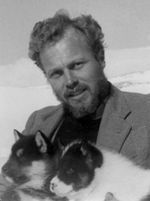 How did all these mountains, inlets, and ice shelves acquire their names? A couple of years ago, in a fit of curiosity that somehow never progressed to the point of publication, I contacted David Searle, son of Derek Searle, a leader of the Falkland Islands Dependencies Survey in the nineteen-fifties. The younger Mr. Searle explained: "[My father] was responsible for the names with Dr. Brian Roberts of the Foreign Office and Scott Polar Research Institute (Cambridge).... He was base commander at Horseshoe Island in Marguerite Bay (north of Alexander Island) from 1956 to 1957 and surveyed that island. Because there were so many unnamed features on Alexander Island, they chose to have the theme of classical music for consistency and because much of the landscape was very grand. My father was not classically trained, but did enjoy his classical music." He died in 2003, at the age of seventy-five. There is, of course, a mountain named after him.
How did all these mountains, inlets, and ice shelves acquire their names? A couple of years ago, in a fit of curiosity that somehow never progressed to the point of publication, I contacted David Searle, son of Derek Searle, a leader of the Falkland Islands Dependencies Survey in the nineteen-fifties. The younger Mr. Searle explained: "[My father] was responsible for the names with Dr. Brian Roberts of the Foreign Office and Scott Polar Research Institute (Cambridge).... He was base commander at Horseshoe Island in Marguerite Bay (north of Alexander Island) from 1956 to 1957 and surveyed that island. Because there were so many unnamed features on Alexander Island, they chose to have the theme of classical music for consistency and because much of the landscape was very grand. My father was not classically trained, but did enjoy his classical music." He died in 2003, at the age of seventy-five. There is, of course, a mountain named after him.
December 14, 2011
Mozart's godson
I recently made brief mention of a paper by the musicologist Michael Lorenz, in which he announced the discovery of a hitherto unknown godson of Mozart, named Wolfgang Amade Nebe. I asked Dr. Lorenz for more details, and here they are:
The discovery of Mozart as godfather resembles an unknown room that suddenly opens in Mozart's life. The godchild's father, Andreas Nebe (b. 1741 Hettstadt in Saxony, d. 1811 Vienna), was a servant of Count Karl Joseph von Palm-Gundelfingen (1749-1814), and he must have made Mozart's acquaintance in the Count's house. Palm was a great lover of music and also was one of the subscribers of Mozart's 1784 concerts in the Trattnerhof. The baptism took place on May 30, 1787, in the Piarist Church of Maria Treu, the parish church of the suburb Josephstadt (of Bruckner fame). Mozart could not be present, which was obviously caused by the fact that on this very day he received word of his father's death. Therefore he was substituted by the state official Johann Sattmann, a friend of Nebe or Mozart or both (see the picture above, the key passage in the baptismal entry reading: "anstatt und im Nam[en] des H[errn] Amadeus Wolfgang Mozart Kapellmeisters").... The only person [among the guests] who could be linked to Mozart was the midwife Sophia Stadler (1724-1790), the mother of the two legendary clarinet players Anton and Johann Stadler.
Wolfgang Amade Nebe attended the Piaristengymnasium (where he must have met Carl Mozart, who also attended this school) and in 1807 became an unpaid employee of the conscription office of the Vienna Magistrate (which was the office responsible for keeping track of the male populace that was liable to military service). In 1813 he was appointed a definite post at this office and took the oath as "Wiener Bürger" (Viennese Citizen). One year after the death of his mother, in 1836, Nebe married Anna Dander (1783-1865), the widow of a Tyrolian chestnut vendor.
Wolfgang Amade Nebe thought highly of himself, perhaps owing to his famous godfather. He occasionally pretended to have a social status that did not have, and his self-esteem sometimes bordered on fraud. In his marriage contract he described himself as "honorary citizen" of Vienna, a status he did not possess; his illiterate wife probably believed it and she certainly also believed him when he told her that his father had been a "doctor of medicine." But that's not all. On April 6, 1814, Nebe stood godfather to a daughter of a friend in the parish church of Alservorstadt and in the baptismal record he set the flamboyant (and pretentious) signature: "Wolfgangus Amade edl[er][!] V[on] Nebe." Wolfgang Amade Nebe died on June 11, 1839, at his home in Breitenfeld No. 15 (today Laudongasse 40), of abdominal dropsy. His widow, Anna Nebe, drew her widow's pension for 26 more years. She died at 82, of old age, on November 12, 1865.
How could Mozart's godfatherhood have remained undetected for so long? From my decade-long experience investigating the great composers of the Viennese classical era in the Viennese church records I draw the following conclusion: musicians (even if they had a permanent position) were not valued among professional colleagues as godparents. People preferred aristocrats, civil servants, artisans and citizens with a secure income. Of course, prominent musicians appear in the Vienna church books (particularly Antonio Salieri, who as "Hofkapellmeister" was an enthusiastic godfather and witness). But it is obvious that Mozart avoided familial responsibilities of this kind, and his absence as a godparent to the children of composers and musicians who were his friends seems to suggest reluctance. In this he evinces the same intentional reticence as Ludwig van Beethoven and Franz Schubert.
I admit to being curious about another paper appearing in the same issue of Acta Mozartiana that contains Dr. Lorenz's work—namely, Joachim Brügge's "'Mozart was crazy. Flat fucking crazy': Mozart am Broadway 2010."
December 11, 2011
Gesualdo
More on campaign ads
In my Rick Perry post below — I hope never to use that phrase again — I commented that Ronald Reagan's 1984 re-election campaign popularized the use of Coplandisms in the political-ad business. For an earlier example, see the common-man coda of the 1976 Gerald Ford ad above. Below are a few ads for Nixon's 1968 campaign, which go in a different direction. For a man who criticized modernist tendencies in twentieth-century music, Nixon certainly allowed his operatives considerable latitude in harmonizing his message. The first ad seems to suggest that Nixon will restore a clear tonal center in a kooky atonal world, but a slightly jarring raised fourth at the end hints that he, too, has a modernist edge. The second ad meanders through several styles and ends on a sassy discord. The legendary "Nixon for American Youth" ad speaks for itself.
December 10, 2011
Copland and the Republicans
From Copland's FBI file. Click to enlarge.
A few days ago, I mentioned a musical irony undercutting an odious new TV ad by Rick Perry, the Texas governor and presidential aspirant. While Perry decries the fact that openly gay men and women are now allowed to serve in the American armed forces, a feeble soundtrack gestures in the direction of the "Americana" style of Aaron Copland, and in particular of Appalachian Spring. You can see what I mean by comparing the ad itself — if anyone has moral qualms about accumulating hits for Gov. Perry, there is the option to vote "dislike," as more than half a million people have already done — to the opening and closing sections of Appalachian Spring. This observation is now making the rounds, although it's been somewhat distorted in the process: the music is not by Copland, although it certainly attempts to get close.
The irony is, of course, that Copland was gay, and tended strongly to the ideological left, as the above communication from J. Edgar Hoover suggests. In 1953, at the insistence of a Red-baiting congressman, his Lincoln Portrait was dropped from a concert celebrating Eisenhower's inaugural, and later that year the composer went before Joe McCarthy's Permanent Subcommittee on Investigations. As the decades passed, the cloud over Copland lifted, to the point where both Margaret Thatcher and Gen. Norman Schwarzkopf felt free to serve as narrators for Lincoln Portrait. Whoever put together Perry's ad is hardly the first to appropriate Copland's style in questionable fashion, although I don't recall hearing it used in an explicitly anti-gay context. In The Rest Is Noise I noted that Ronald Reagan's "Morning in America" campaign film in 1984 employed a Coplandesque soundtrack. Indeed, after an excerpt from the Copland-centered chapter of the book appeared in The New Yorker, in 2007, the composer/arranger Alan Foust, who worked on the ad, wrote to me explaining how it came to be. Since then, Coplandisms have been a cliché in campaign commercials on all points of the political spectrum.
See also: The Bernstein Files.
Alex Ross's Blog
- Alex Ross's profile
- 425 followers


